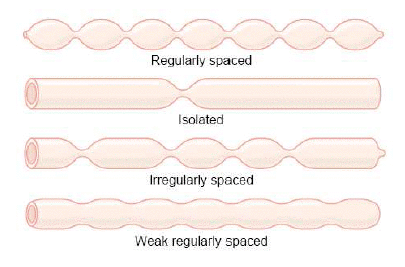01 OVERViEW

MODELING OF DIGESTA FLOW DYNAMICS
-
Developed an in silico environment of duodenum for the simulation of flow dynamics of digesta inside the gastrointestinal (GI) tract to be considered for the design of micro-robotic capsule (MRC)
-
Modeled and characterized the human small intestine with respect to its physiological properties, activities and movements
-
Analyzed the effect of intestinal forces that will be experienced by the capsule containing the in vivo GI sensor to be implanted and the tissue attachment mechanism (TAM)
-
Designed a controller for human weight-loss or maintenance system (WLS), a closed-loop control system that receives real-time dietary intake feedback from this in vivo sensor, and provides personalized diet intake suggestion to the user

02 MY CONTRiBUTION
I was offered an international research internship opportunity by Dr. P. V. Manivannan of IIT Madras to work on developing a Weight-Loss Control System (WLS) for the application of a Micro-Robotic Capsule, in collaboration with University of Nebraska-Lincoln (UNL), USA. I got an opportunity to visit the laboratory at UNL for about 10 weeks and learn the status-quo of the development of rest of the modules of this novel project led by Dr. Benjamin Terry
Taking this forward, I took this research internship to be wholly worked upon as my Master’s thesis project. In this regard, I worked at UNL as a Visiting Graduate Research Assistant for a semester to closely work with the other graduate students of the lab involved in this project.
I worked on developing a 3D model of duodenum using SolidWorks, conducted CFD and FSI analysis experiments to analyse the flow of the micro-robotic capsule inside the human duodenum for its localization.
I have then proposed a sensor mechanism, a deployment mechanism of the sensor from micro-robotic capsule that gives the real-time feedback of the dietary intake or energy intake by the host.
In the other module, I devised the closed-loop control law for the Weight-Maintenance of a human with the real-time feedback obtained from this Gastro-Intestinal (GI) sensor, using the Model-based Predictive Control approach.



03 ACHiEVEMENTS
Shown here are the plots of results of the flow simulations in duodenum -
1. Changes in the flow at pyrolus (i.e. the entrance to duodenum from stomach) are observed through velocity contour in the cross-sectional plane and 2. the shear distribution on the duodenum wall due to pulsatile fluid flow

Design and Modeling
A 3D model of duodenum, the starting portion of small intestine connecting the stomach to jujenum was developed, using SolidWorks

Meshing and Analysis
With the surface mesh of the geometry, automatic inflation meshing and volume meshing were given, since it is a visco-elastic material, in ANSYS

Flow Simulations
Pertaining to the peristaltic movement of the small intestine, the inlet velocity profile is made transient and pulsatile and studies were made using FLUENT
Developed an in silico environment of duodenum for the simulation of flow dynamics of digesta inside the gastrointestinal (GI) tract to be considered for the design of micro-robotic capsule (MRC) that deploys the sensor for measurement of diet-intake and gives a real-time feedback to the Weight-Loss System for a closed-loop control of diet program for given user requirements.
For improved studies and analyses, a complex model of curvy duodenum was designed that closely resembles the actual physiology of human duodenum including –
-
circular folds,
-
offset valves,
-
bulbs and
-
curves associated.

04 LEARNiNGS

DESIGN AND 3D MODELING
Development of virtual prototype for comprehension of challenges in MRC and GI sensor deployment

MECHANICAL ANALYSIS
For transforming the 3D design into a meshed model for setting of visco-elastic material properties and peristalsis

CFD SIMULATIONS
Simulations of chyme (digesta) flow in human intestine for analysis of impact and interaction of GI sensor with the wall
LITERATURE REVIEW
Learnt about the various challenges, status-quo of world-wide research and the biomedical applications of Micro-Robotic Capsules